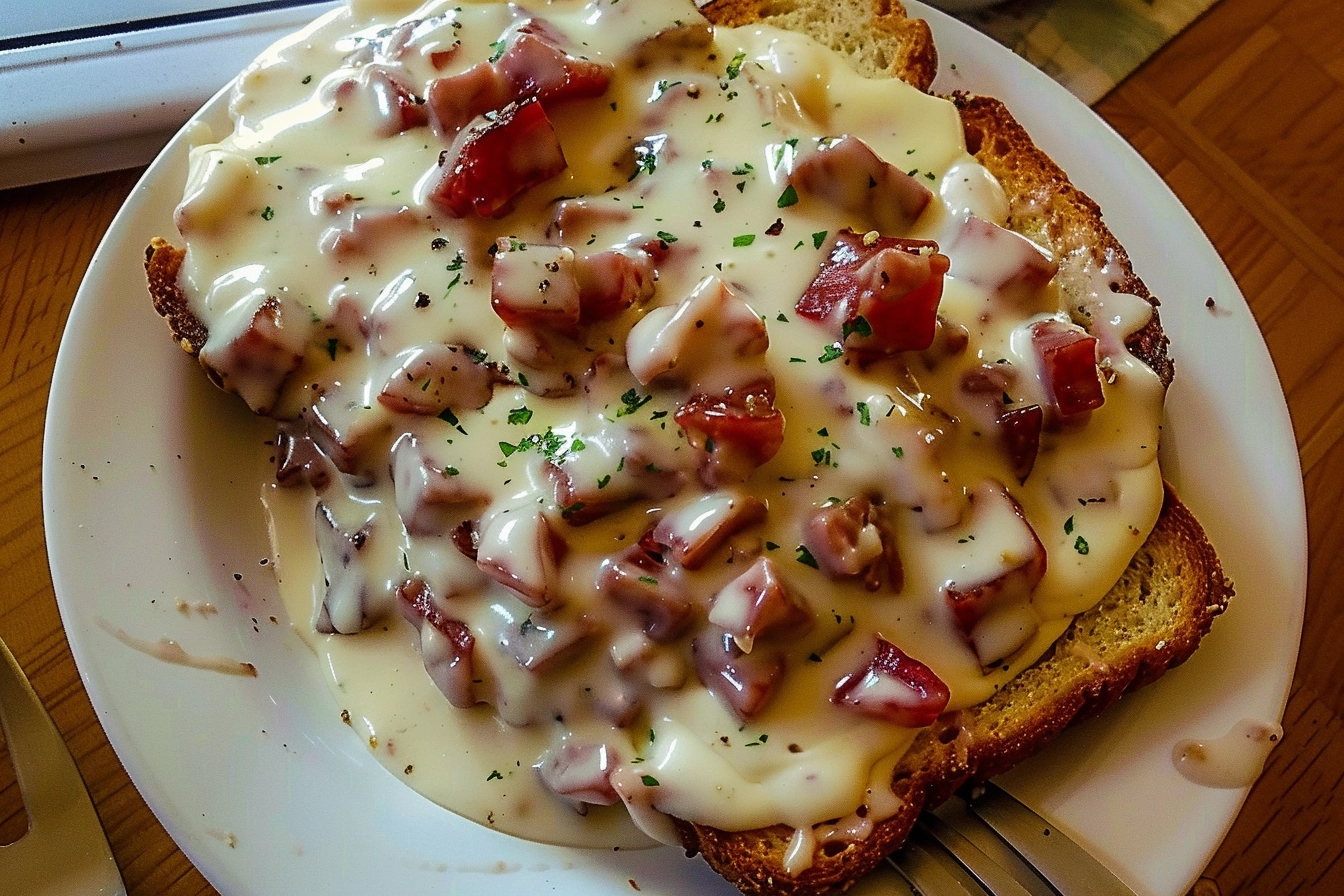Ingredients
- 2 tablespoons butter: This will be used to create a roux and add richness to your sauce.
- 1 ½ cups warm milk: The milk helps in forming a creamy base for the sauce. Warm it slightly before use to mix better with the roux.
- 1 (8 oz.) jar of dried beef, chopped: Dried beef should be rinsed if overly salty and then chopped to integrate well into the sauce.
- 2 tablespoons all-purpose flour: This will thicken the sauce. Ensure it’s cooked through in the roux to avoid a floury taste.
- 4 slices of bread, toasted: This serves as the base for the dish. Any type of bread you prefer will work, though traditionally white bread is used.
- 1 pinch of cayenne pepper: This adds a slight heat to the dish, enhancing the flavors without overpowering.
Instructions
- Prepare the Roux: In a medium saucepan over low heat, melt the butter. Add the flour to the melted butter, whisking constantly until smooth to form a roux. This mixture should not brown; keep the heat low to avoid scorching.
- Develop the Sauce: Gradually add the warm milk to the roux while continuing to whisk to prevent lumps. Once all the milk is incorporated, turn the heat to medium-high. Bring the mixture to a boil, stirring constantly, until the sauce thickens—about 5 to 7 minutes.
- Add Beef and Season: Reduce the heat to low and stir in the chopped dried beef and a pinch of cayenne pepper. Continue to cook for an additional 2-3 minutes or until the beef is thoroughly warmed. Adjust seasoning with more cayenne if desired for extra heat.
- Serve: Spoon the hot chipped beef mixture over the toasted bread slices and serve immediately.
Notes
- Alternative Protein: For a different take on this classic, you can substitute the dried beef with 3/4 pound of browned, drained hamburger meat. This variation adds a heartier texture and flavor.
- Gluten-Free Modification: To make this dish gluten-free, replace all-purpose flour with an equal amount of cornstarch. This will still thicken your sauce but keep it free from gluten. Serve over gluten-free toast or biscuits instead of regular bread.
Tips for Success
- Roux Basics: Make sure the roux is cooked with no raw flour taste before adding milk. It should look golden and have a nutty aroma.
- Milk Temperature: Warm your milk before adding it to the roux. This helps integrate the milk smoothly without clumps.
- Consistency Adjustments: If your sauce is too thick, you can thin it with a little more milk. If it’s too thin, let it simmer a bit longer or use a bit more flour in your roux.
This expanded version includes more precise instructions and additional tips to ensure that even beginners can achieve a delicious result.


